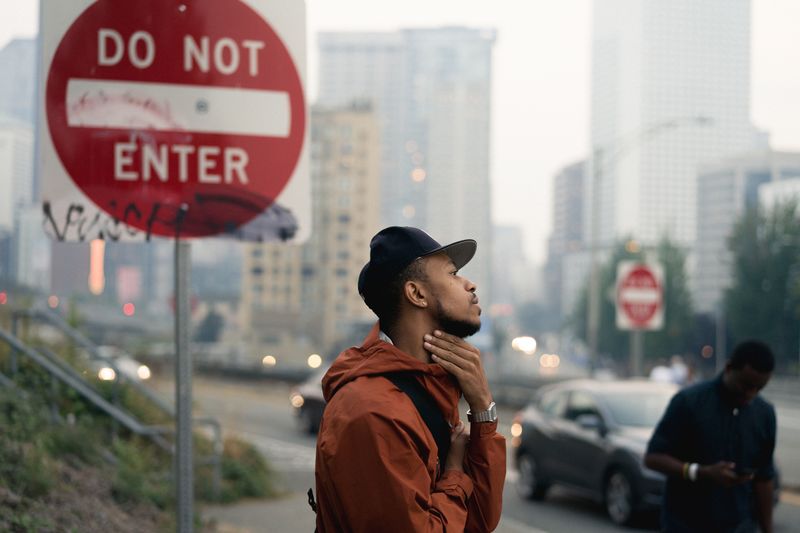Our Street Photographers PDFs
Our Street Photographers PDFs
Blog Article
Everything about Street Photographers
Table of ContentsStreet Photographers - The FactsUnknown Facts About Street PhotographersEverything about Street Photographers7 Simple Techniques For Street PhotographersNot known Details About Street Photographers
Road photographers do not always have a social purpose in mind, but they like to separate and catch moments which may or else go unnoticed.Though he was affected by a lot of those who influenced the street photographers of the 1950s and '60s, he was not primarily thinking about capturing the spirit of the road. The impulse to visually record individuals in public began with 19th-century painters such as Edgar Degas, douard Manet, and Henri de Toulouse-Lautrec, who worked side by side with photographers trying to capture the essence of city life.
Since of the somewhat primitive modern technology offered to him and the lengthy exposure time needed, he had a hard time to capture the hustle and bustle of the Paris roads. He tried out with a series of photo techniques, trying to find one that would allow him to capture movement without a blur, and he located some success with the calotype, patented in 1841 by William Henry Fox Talbot. While the digital photographers' subject was basically the very same, the outcomes were markedly various, showing the influence of the professional photographer's intent on the personality of the images he generated.
Offered the great quality of his photographs and the breadth of product, designers and musicians typically purchased Atget's prints to use as recommendation for their very own job, though commercial rate of interests were rarely his major inspiration. Instead, he was driven to photo every last residue of the Paris he enjoyed. The mingled interest and necessity of his objective luster through, leading to photos that narrate his very own experience of the city, top qualities that anticipated road digital photography of the 20th century.
Some Known Details About Street Photographers
They disclose the city with his eyes. His work and basic understanding of digital photography as an art kind served as ideas to generations of photographers that followed. The future generation of street photographers, though they likely did not describe themselves because of this, was ushered in by the photojournalism of Hungarian-born photographer Andr Kertsz.
Unlike his peers, Brassa used a larger-format Voigtlnder electronic camera with a much longer exposure time, compeling him to be much more calculated and thoughtful in his method than he might have been if making use of a Leica. (It is thought that he might not have actually been able to manage a Leica during that time, yet he did, nonetheless, make use of one in the late 1950s to take colour photographs.) Brassa's photos of the Paris abyss brightened by fabricated light were a revelation, and the collection of the collection that he released, (1933 ), was a major success.
Cartier-Bresson was a champion of the Leica cam and among the first digital photographers to maximize its abilities. The Leica allowed the professional photographer to interact with the surroundings and to record moments as they happened. Its relatively little dimension additionally assisted the digital photographer fade into the background, which was Cartier-Bresson's preferred method.
The Only Guide for Street Photographers
It is as a result of this essential understanding of the art of image taking that he is usually attributed with discovering the tool around once more roughly a century considering that its development. He took pictures for even more than a half century and influenced generations of digital photographers to trust their eye and instinct in the moment.
These are the inquiries official site I shall try to respond to: And afterwards I'll leave you with my very own interpretation of road photography. Yes, we do. Let's kick off with defining what an interpretation is: According to (Street Photographers) it is: "The act of specifying, or of making something guaranteed, distinct, or clear"
No, certainly not. The term is both limiting and deceiving. Seems like a road digital photography must be pictures of a streets appropriate?! And all road digital photographers, except for a handful of outright beginners, will fully appreciate that a street is not the essential component to road photography, and actually if it's an image of a street with maybe a couple of dull individuals doing absolutely nothing of passion, that's not street digital photography that's a picture of a road.
The 10-Minute Rule for Street Photographers
He makes a legitimate factor don't you assume? While I agree with him I'm not certain "honest public photography" will certainly catch on (although I do kind of like the term "honest digital photography") because "street digital photography" has been around for a lengthy time, with numerous masters' names attached to it, so I think the term is here to stay (Street Photographers).
You can fire at the beach, at an event, in an alley, in a park, in a piazza, in a coffee shop, at a gallery or art gallery, in a metro station, at an event, on a bridge, under a bridge ...
Yes, I'm afraid we have no choice! Without guidelines we can not have an interpretation, and without a definition we don't have a style, and without a style we don't have anything to define what we do, and so we are stuck in a "policies definition genre" loop!
The Ultimate Guide To Street Photographers

Report this page